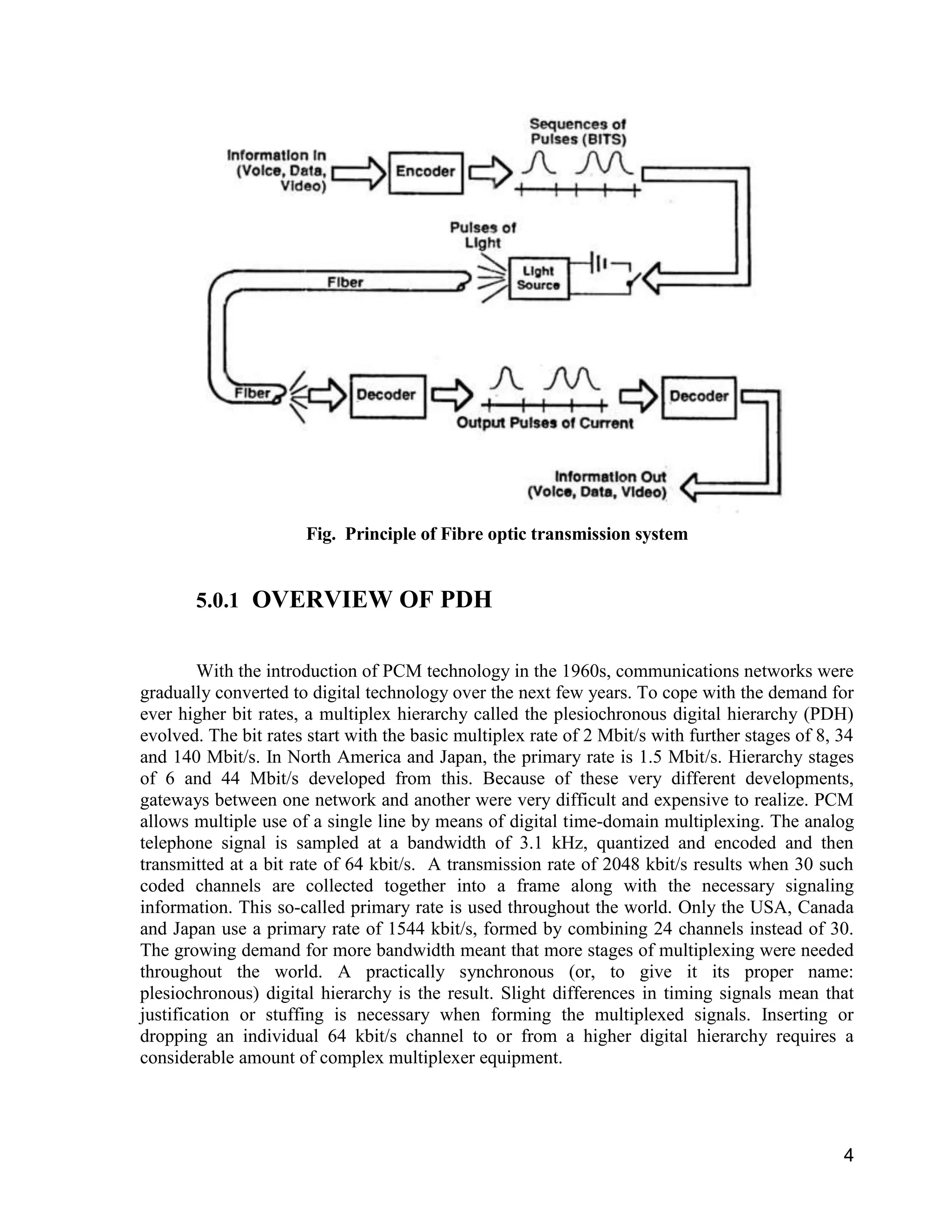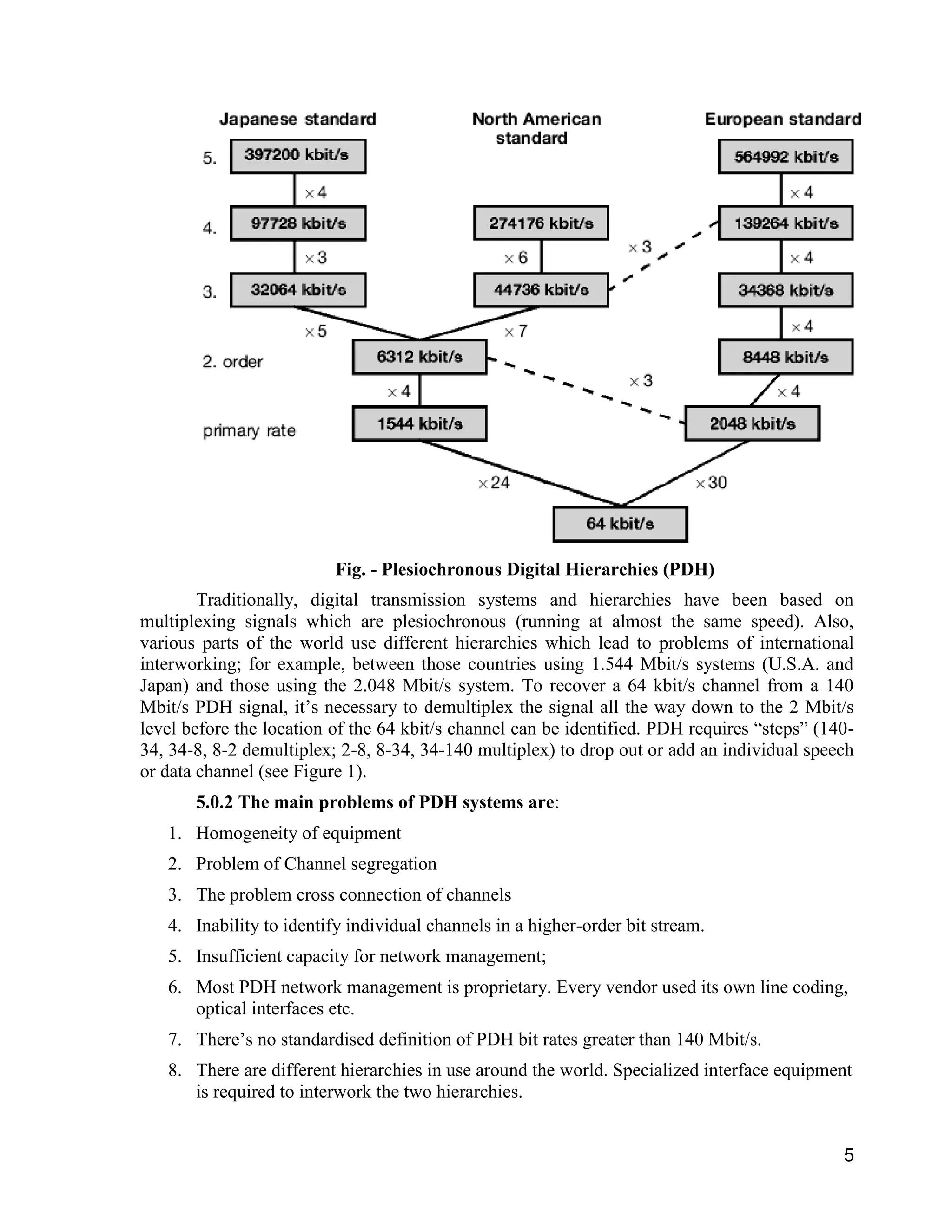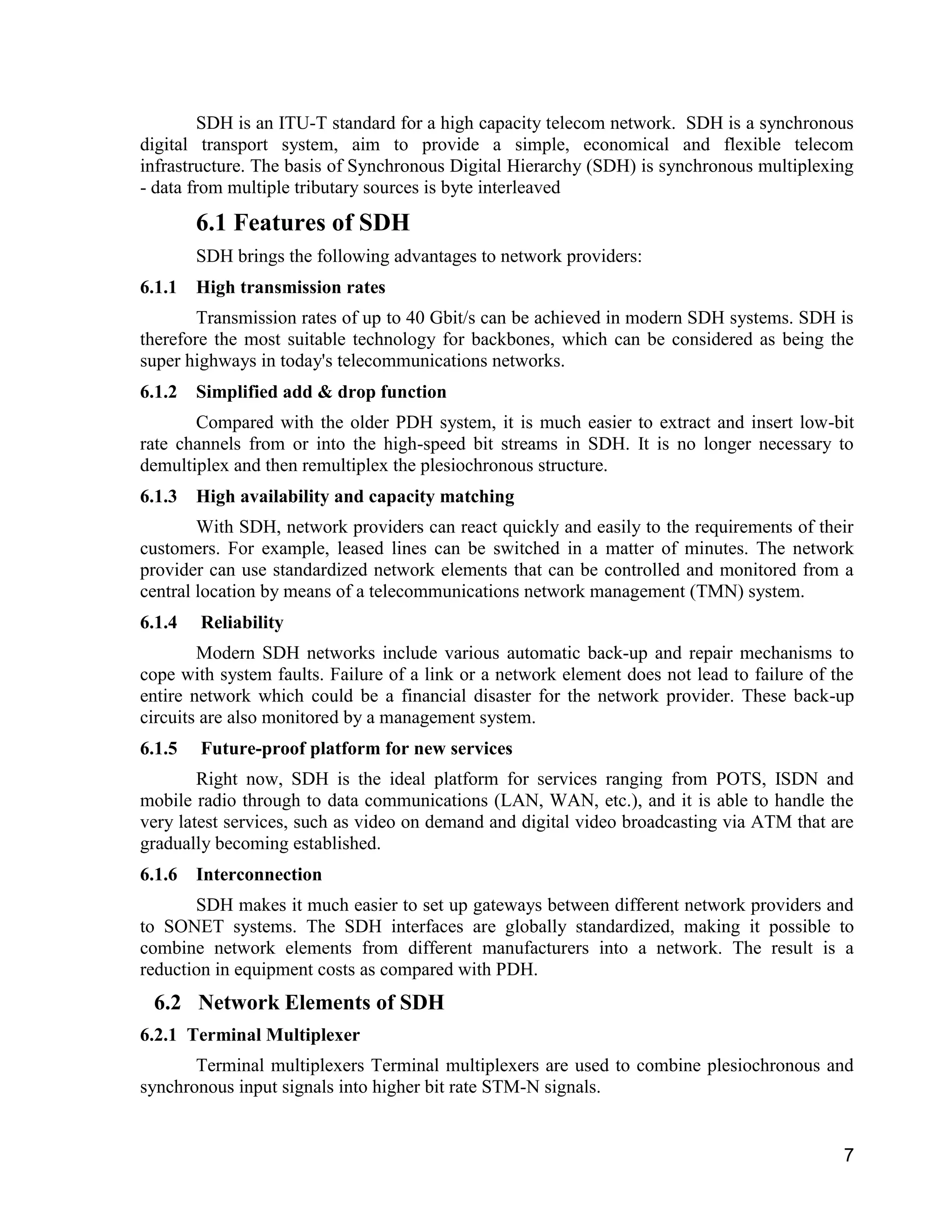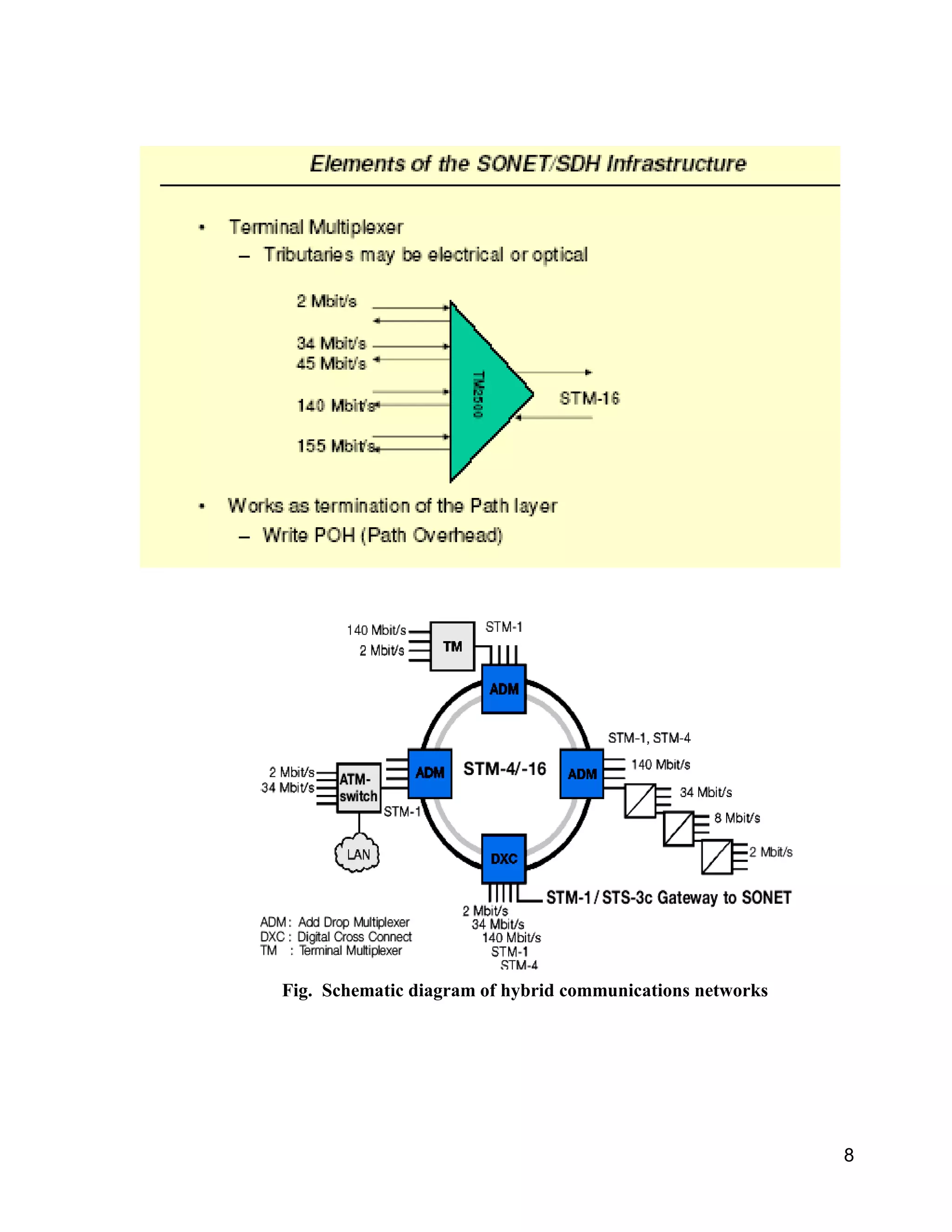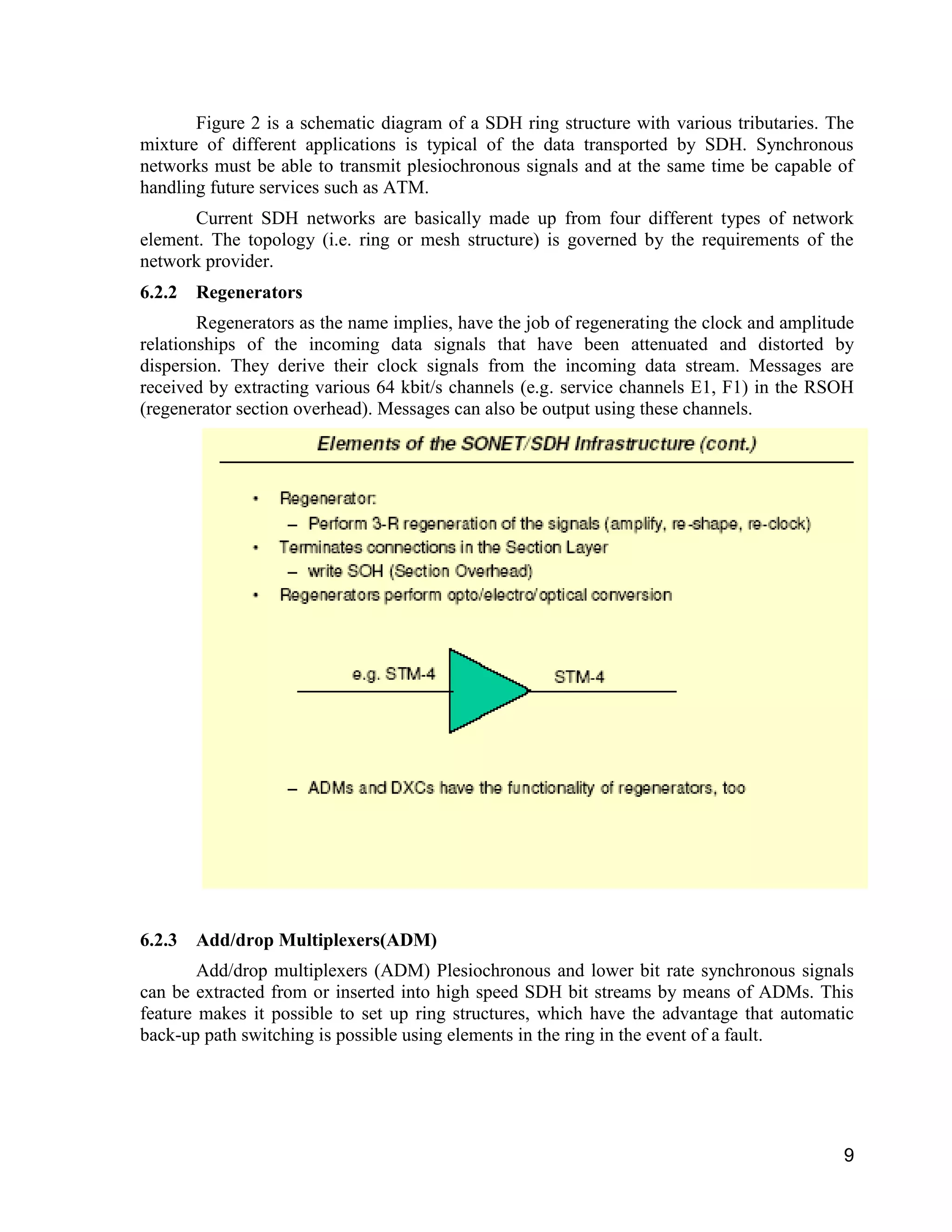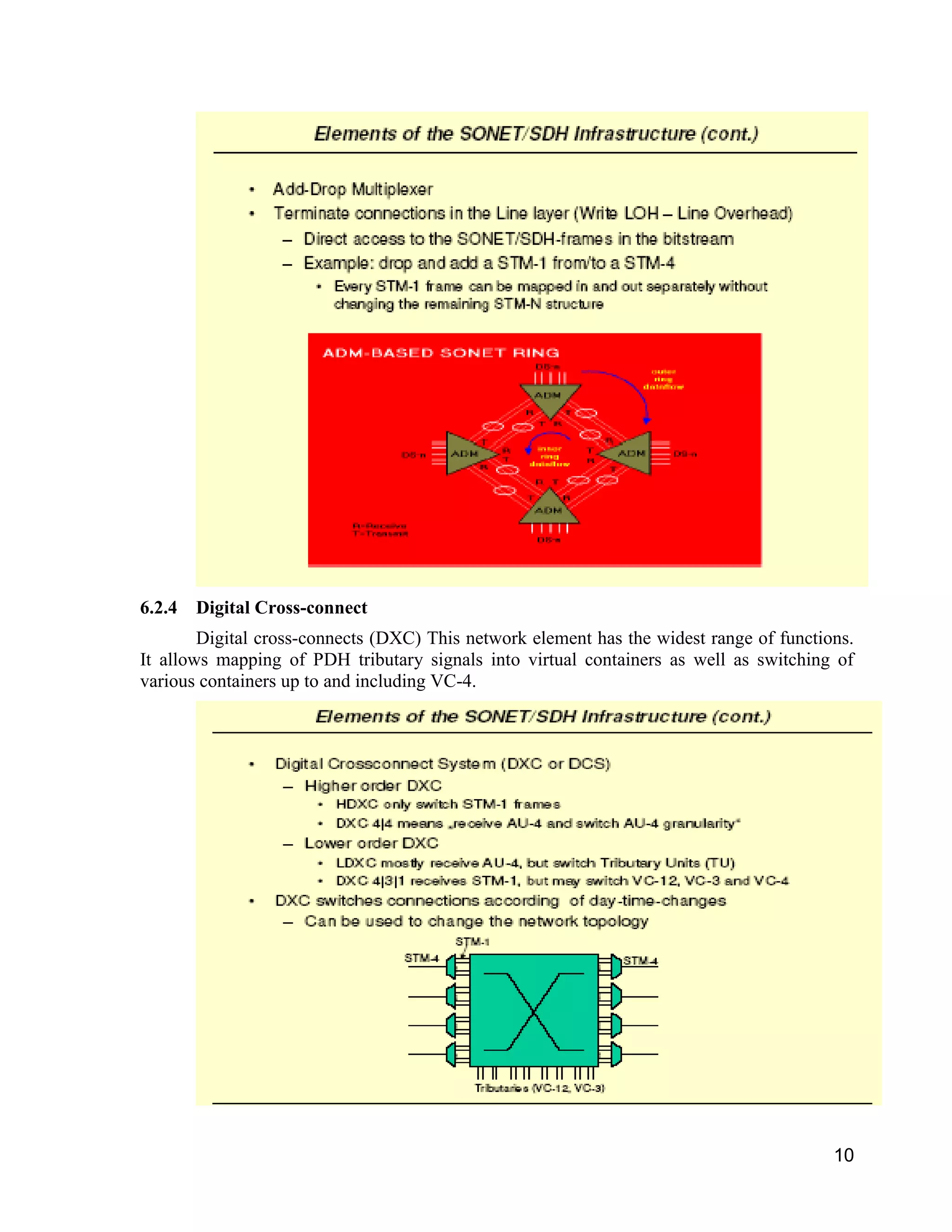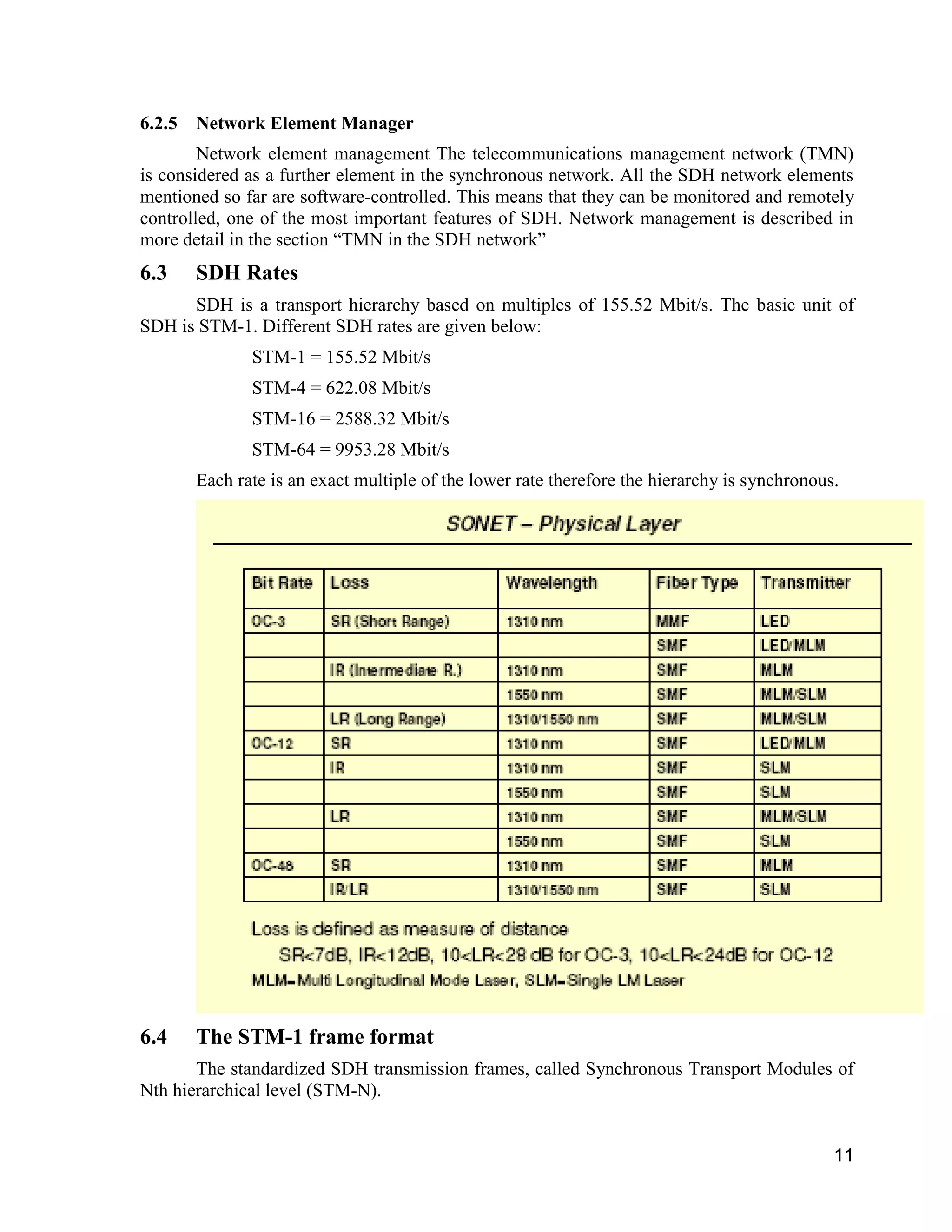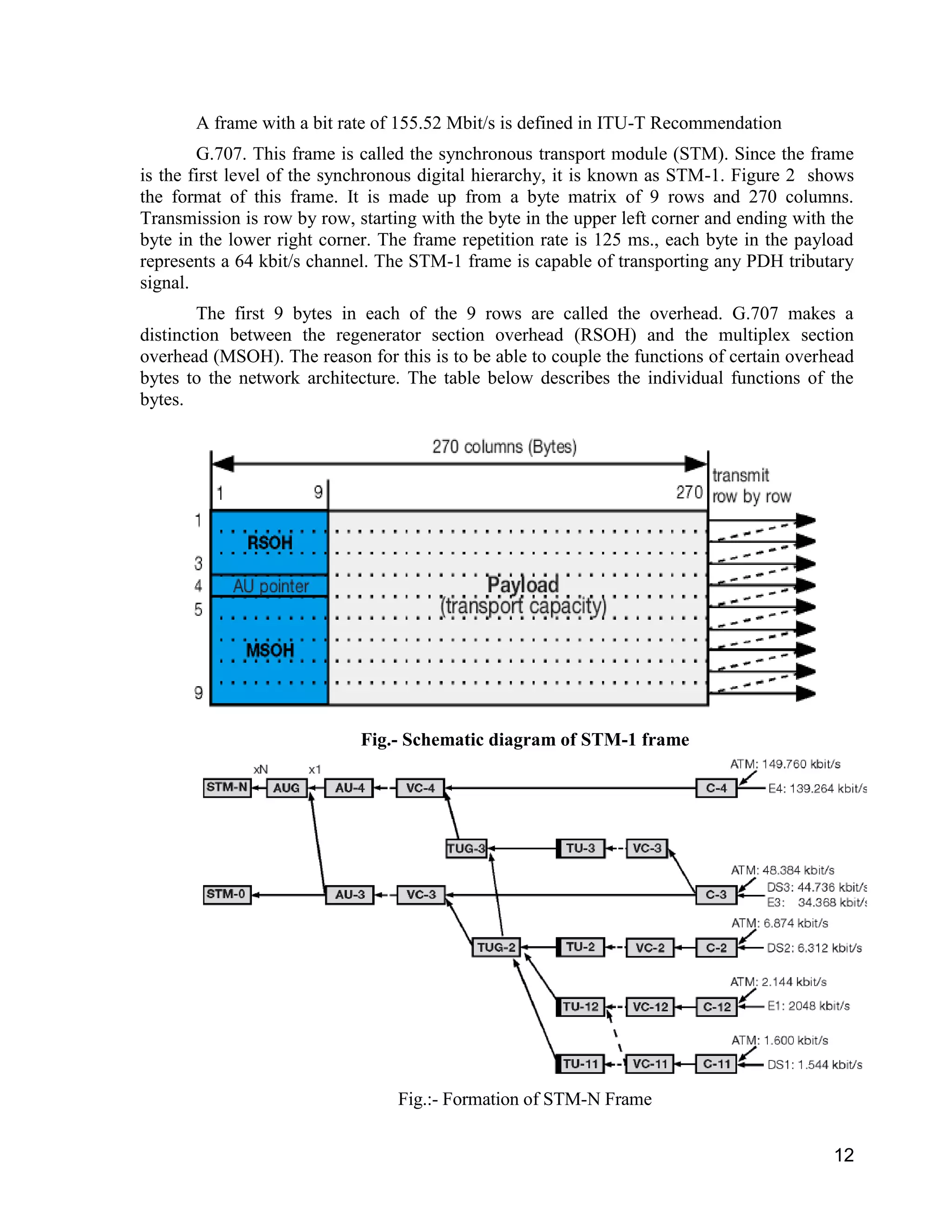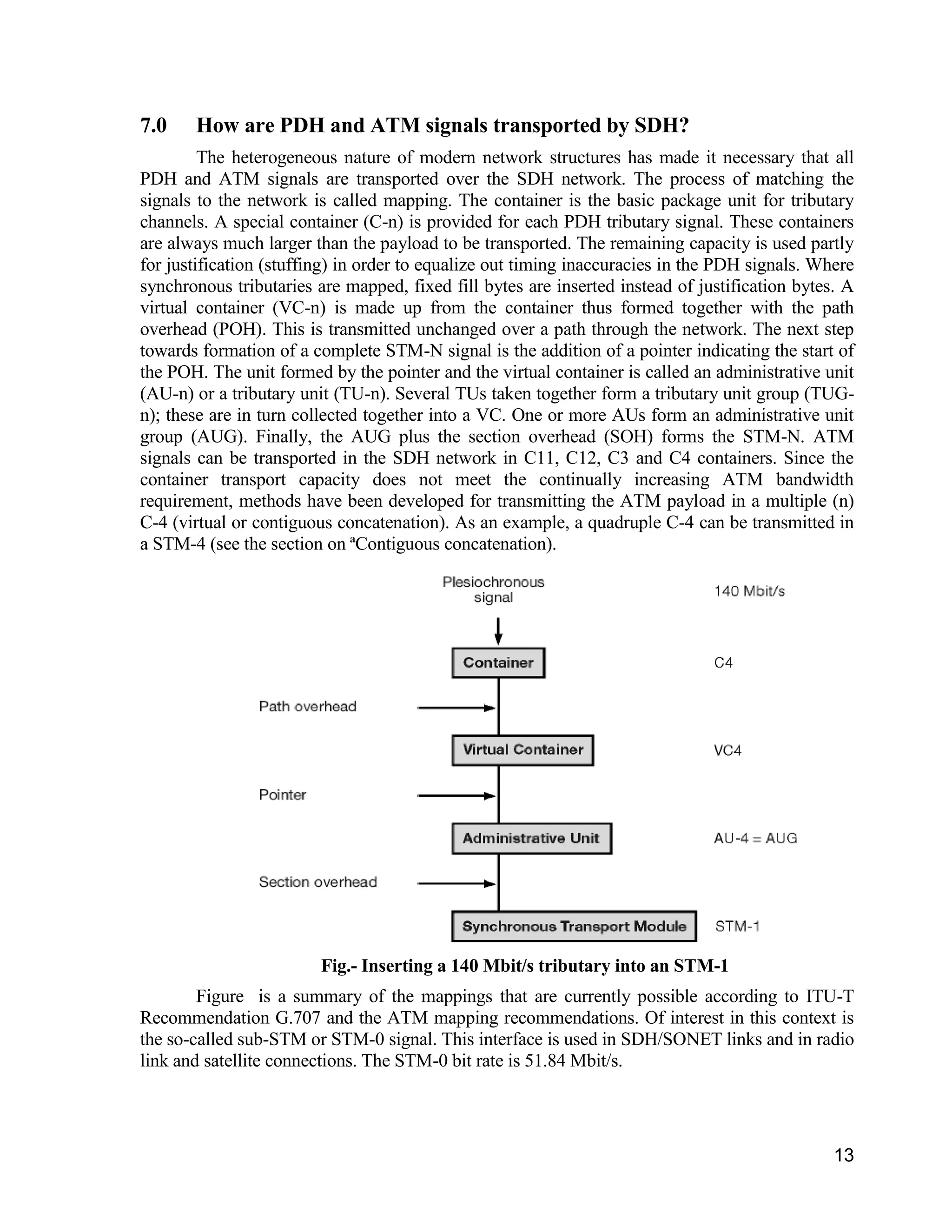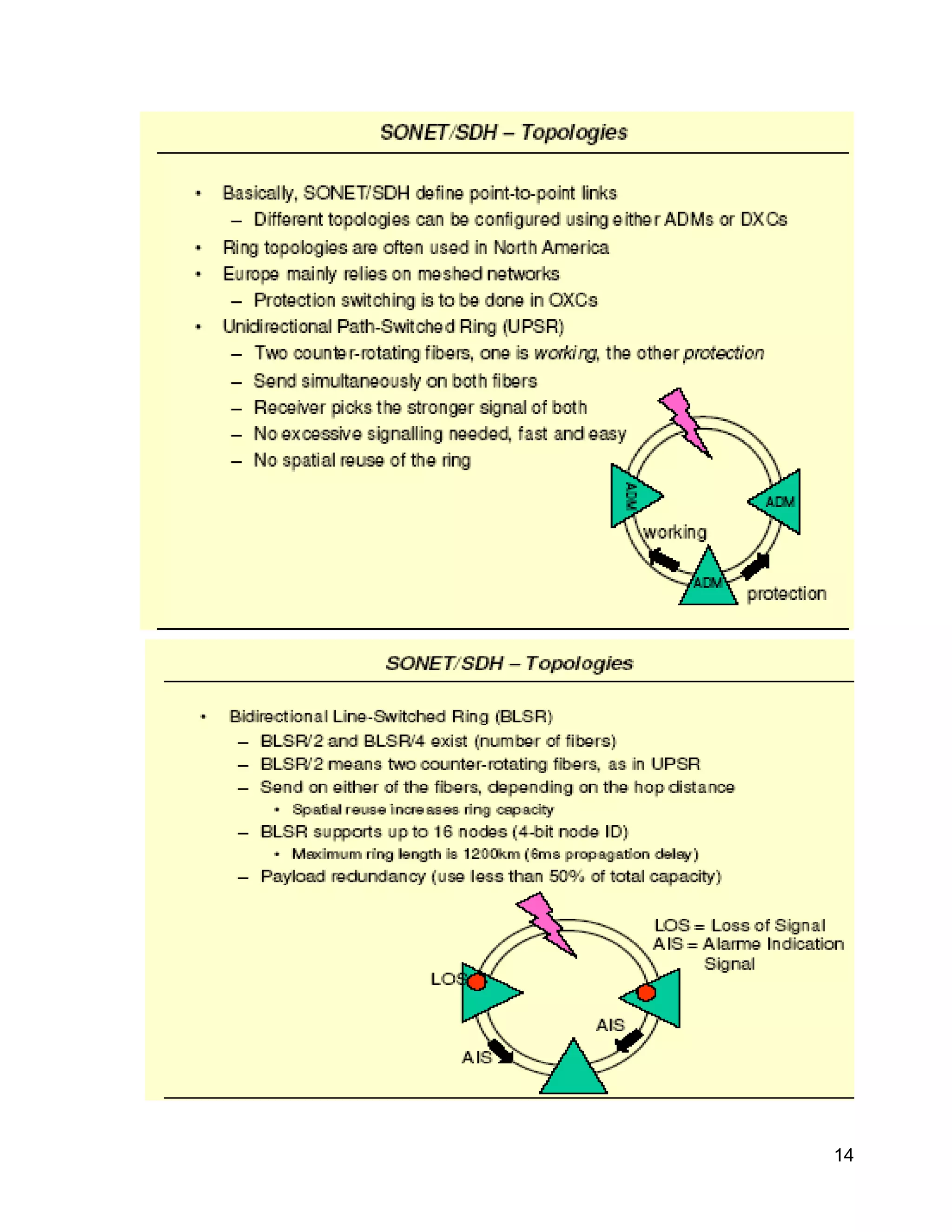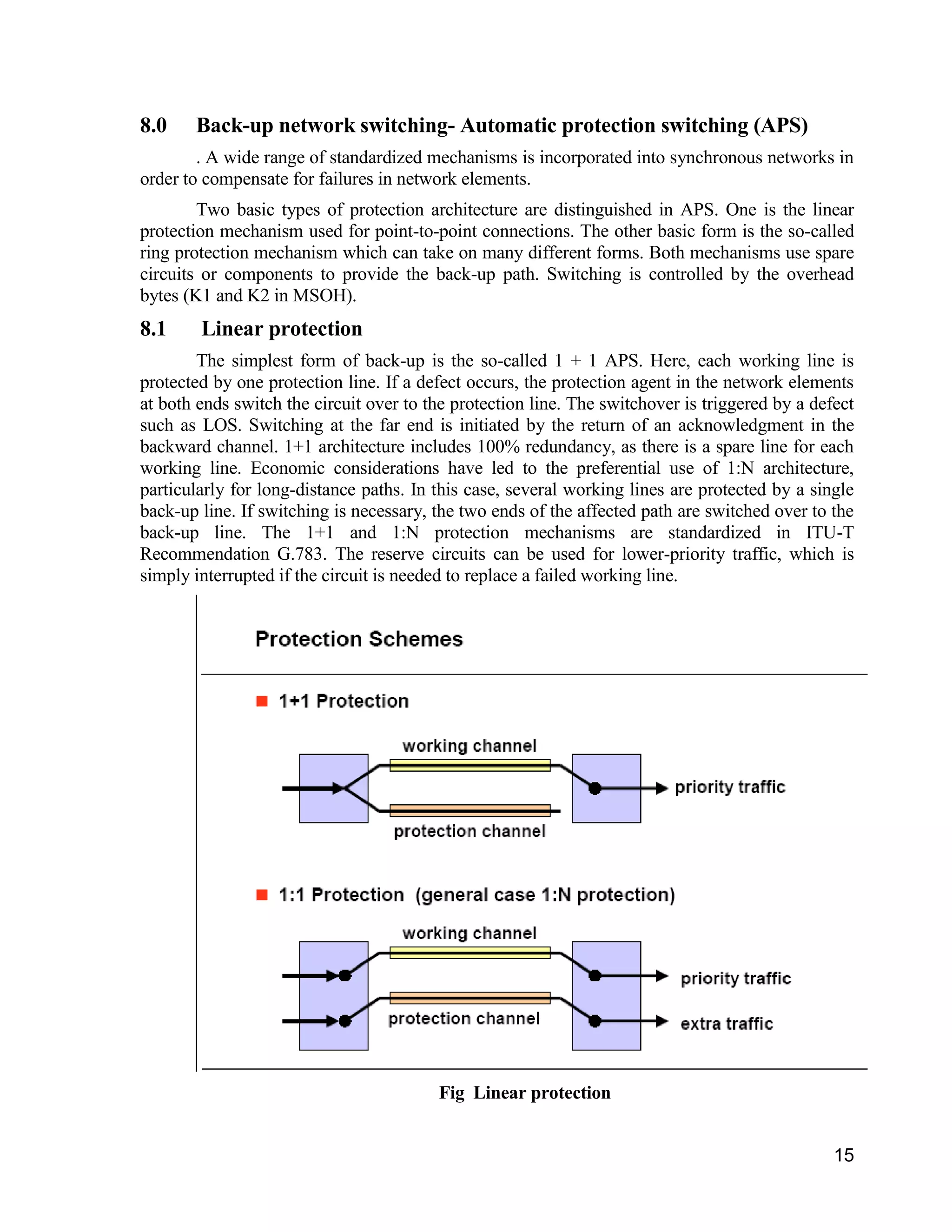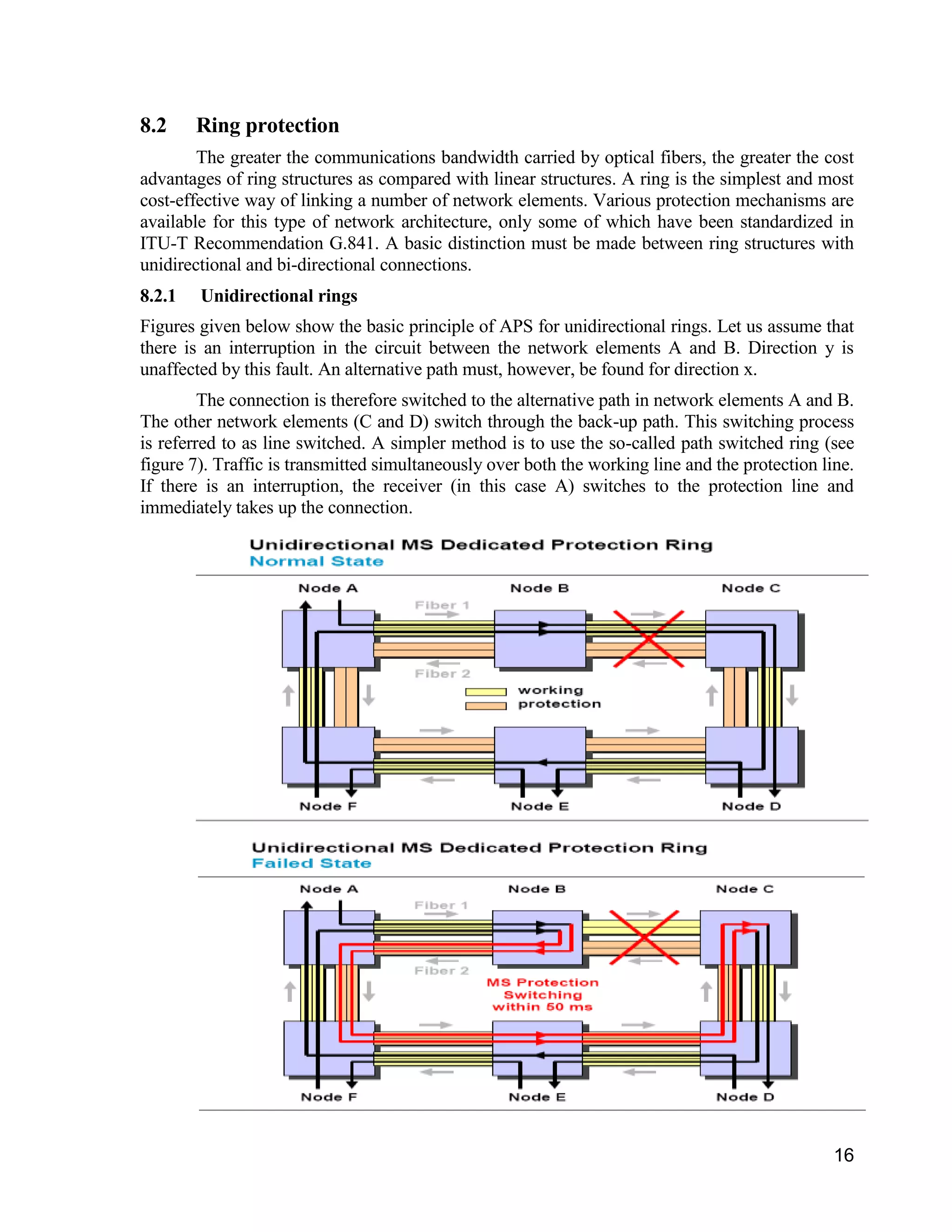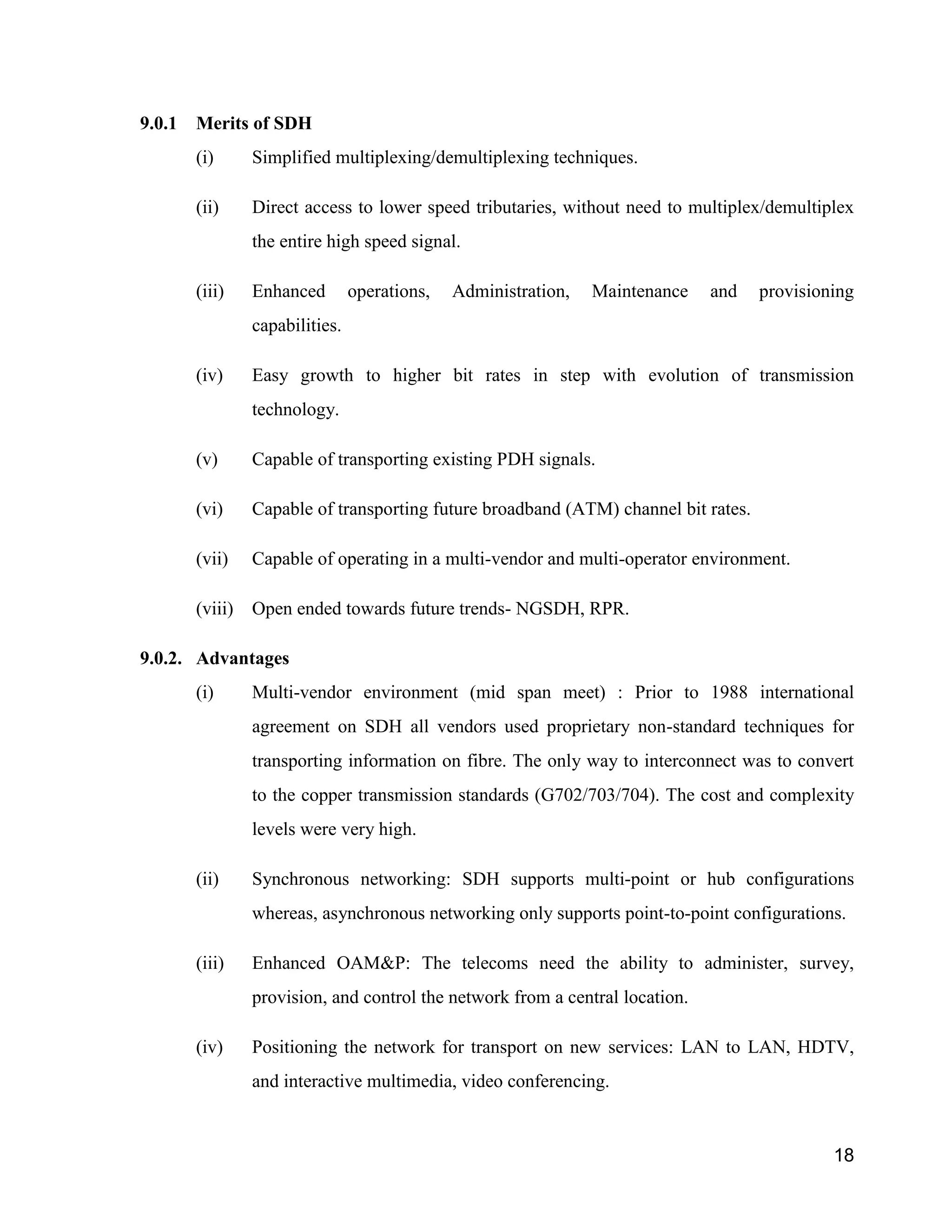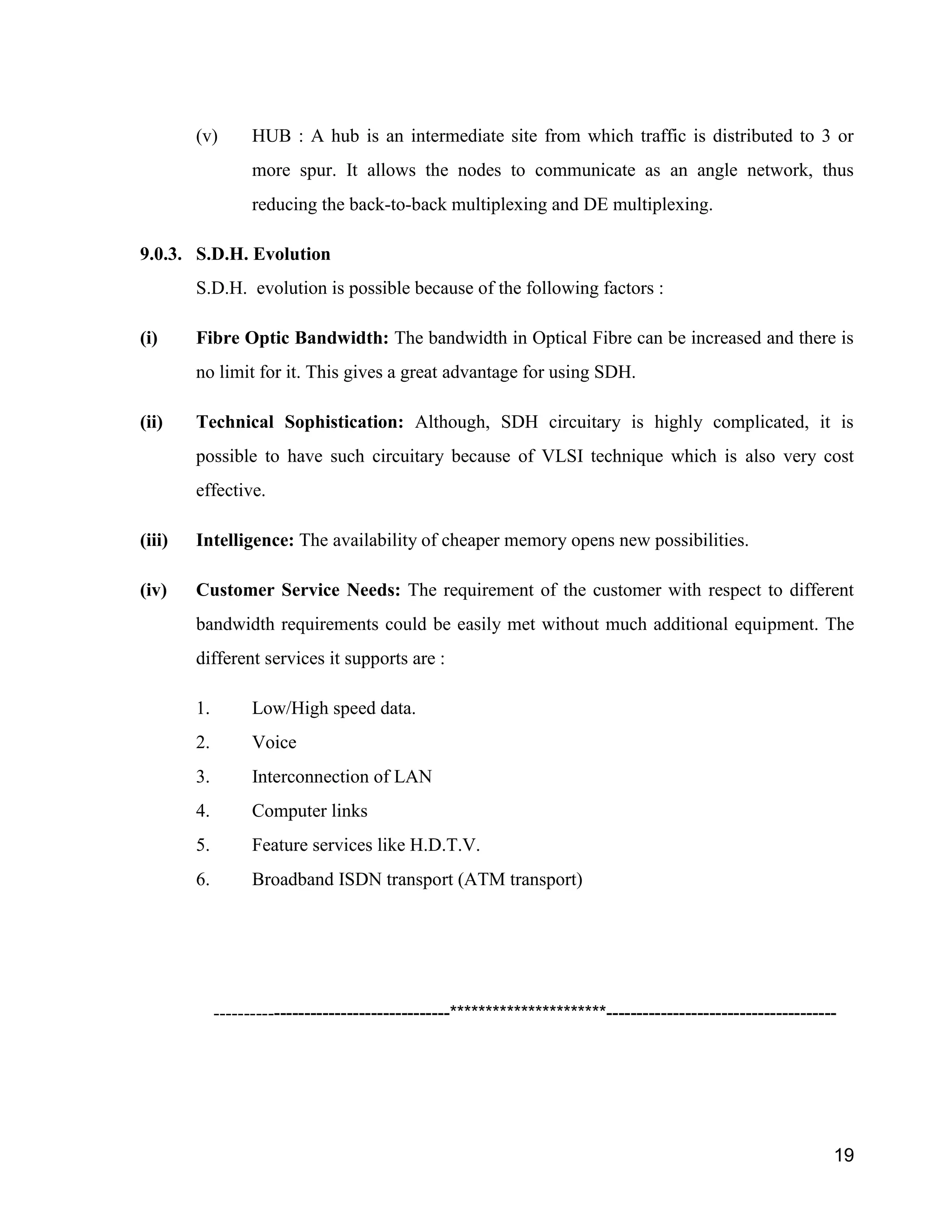The document provides an overview of fiber-optic communications and the transition from PDH to SDH digital network standards. It discusses:
1) The history and development of fiber-optic technology from the 1790s to its widespread use today.
2) How PDH networks evolved but had issues with scalability, synchronization, and global interoperability.
3) How SDH/SONET standards addressed PDH limitations through synchronous digital hierarchies, standardized rates and frame formats, and improved network management capabilities.
4) Key aspects of SDH networks including terminal multiplexers, regenerators, add/drop multiplexers, digital cross-connects, and network element management.
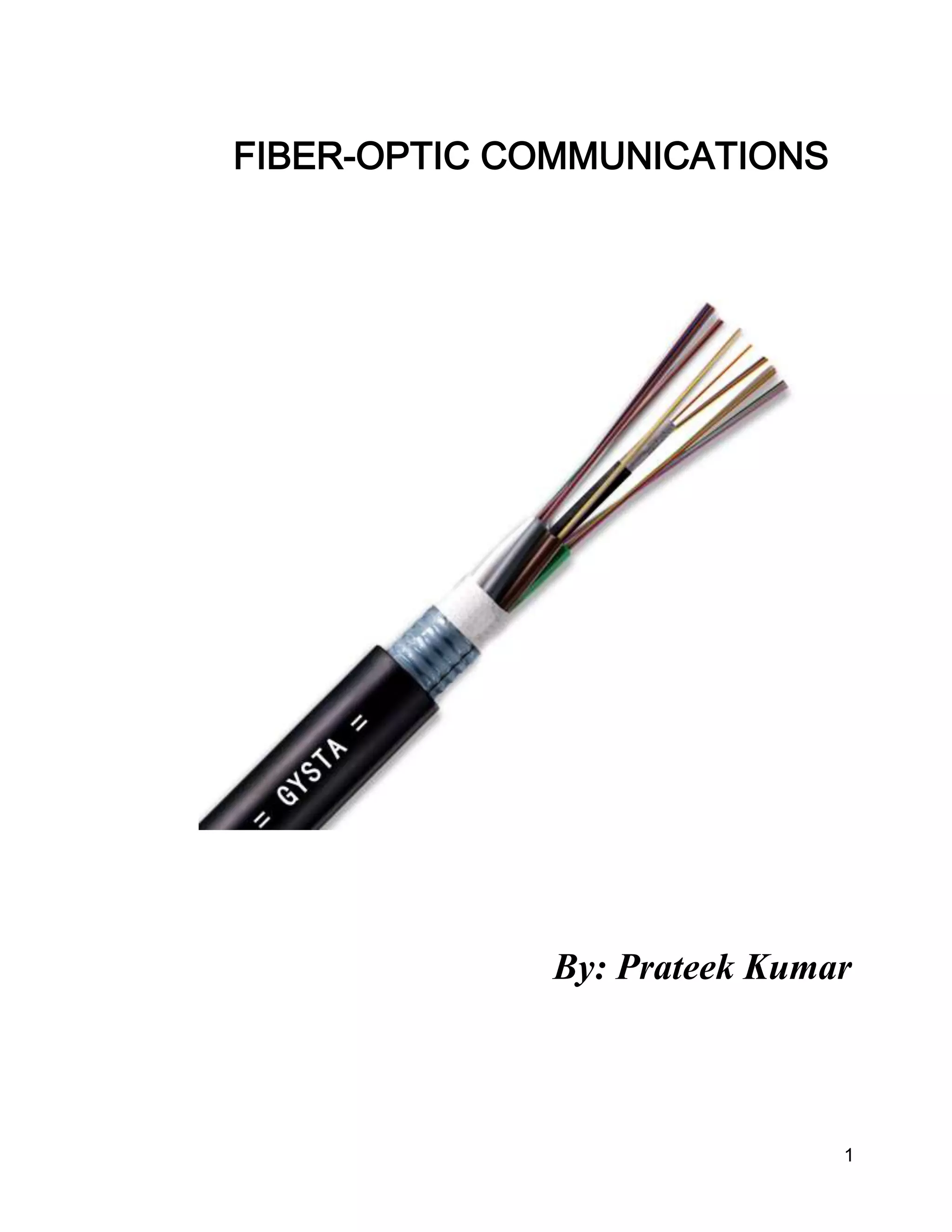
![2
FIBER-OPTIC COMMUNICATIONS
(The Latest Standard for Very High Capacity Networks)
1.0 Brief History of Fiber-Optic Communications
Optical communication systems date back to the 1790s, to the optical semaphore
telegraph invented by French inventor Claude Chappe. In 1880, Alexander Graham Bell
patented an optical telephone system, which he called the Photo phone. However, his earlier
invention, the telephone, was more practical and took tangible shape.
By 1964, a critical and theoretical specification was identified by Dr. Charles K. Kao
for long-range communication devices, the 10 or 20 dB of light loss per kilometer standard.
Dr. Kao also illustrated the need for a purer form of glass to help reduce light loss. By 1970
Corning Glass invented fiber-optic wire or "optical waveguide fibers" which was capable of
carrying 65,000 times more information than copper wire, through which information carried
by a pattern of light waves could be decoded at a destination even a thousand miles away.
Corning Glass developed an SMF with loss of 17 dB/km at 633 nm by doping titanium into the
fiber core. By June of 1972, multimode germanium-doped fiber had developed with a loss of 4
dB per kilometer and much greater strength than titanium-doped fiber.
In April 1977, General Telephone and Electronics tested and deployed the world's first
live telephone traffic through a fiber-optic system running at 6 Mbps, in Long Beach,
California. They were soon followed by Bell in May 1977, with an optical telephone
communication system installed in the downtown Chicago area, covering a distance of 1.5
miles (2.4 kilometers). Each optical-fiber pair carried the equivalent of 672 voice channels and
was equivalent to a DS3 circuit. Today more than 80 percent of the world's long-distance voice
and data traffic is carried over optical-fiber cables.
2.0 Fiber-Optic Applications
FIBRE OPTICS : The use and demand for optical fiber has grown tremendously and
optical-fiber applications are numerous. Telecommunication applications are widespread,
ranging from global networks to desktop computers. These involve the transmission of voice,
data, or video over distances of less than a meter to hundreds of kilometers, using one of a few
standard fiber designs in one of several cable designs.
Carriers use optical fiber to carry plain old telephone service (POTS) across their
nationwide networks. Local exchange carriers (LECs) use fiber to carry this same service
between central office switches at local levels, and sometimes as far as the neighborhood or
individual home (fiber to the home [FTTH]).
Optical fiber is also used extensively for transmission of data. Multinational firms need
secure, reliable systems to transfer data and financial information between buildings to the
desktop terminals or computers and to transfer data around the world. Cable television
companies also use fiber for delivery of digital video and data services. The high bandwidth
provided by fiber makes it the perfect choice for transmitting broadband signals, such as high-](https://image.slidesharecdn.com/fibre-opticscomm-141120045255-conversion-gate02/75/Fiber-optics-communication-Technology-2-2048.jpg)

